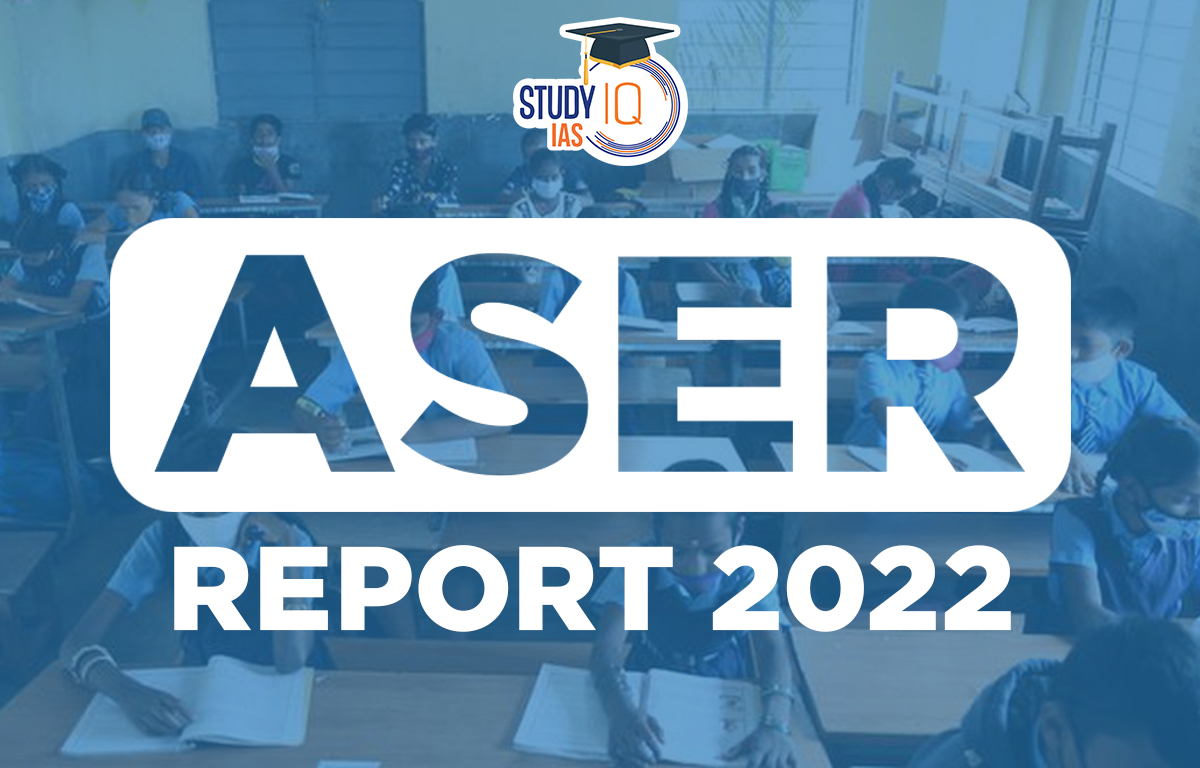Table of Contents
About ASER Report
- It is the key annual, citizen-led household national survey that captures the state of foundational literacy and numeracy in the country.
- It aims to understand whether children in rural India are enrolled in school and whether they are learning.
- The survey provides representative estimates of the enrolment status of children aged 3-16 and the basic reading and arithmetic levels of children aged 5-16 at the national, state and district level.
- The survey is led by the Pratham Foundation and the first ASER was conducted in 2005 and repeated annually for ten years.
- ASER 2022 is the first field-based ‘basic’ nationwide ASER after a gap of 4 years. It comes at a time when children are back in school after an extended period of school closure.

About ASER Report 2022 Findings
- Enrolment and attendance
- Despite school closures during the pandemic, overall enrolment figures have increased from 2018 to 2022.
- The proportion of children (aged 6 to 14) enrolled in government schools has increased sharply from 2018 to 2022.
- In 2022, the all-India figure for 11-14-year-old girls not enrolled in school stands at 2%, thereby continuing the falling trend since 2006.
- The proportion of 3-year-olds enrolled in some form of early childhood education has increased in 2022.
- Further, nationally, the proportion of children in Std I-VIII taking paid private tuition classes increased from 26.4% in 2018 to 30.5% in 2022.
- Average teacher attendance increased slightly, from 2018 to 2022, while average student attendance continues to hover at around 72% for the past several years.
- Learning levels
- Nationally, children’s basic reading ability has dropped to pre-2012 levels, reversing the slow improvement achieved in the intervening years. Drops are visible in both government and private schools in most states, and for both boys and girls.
- Also, children’s basic arithmetic levels have declined over 2018 levels for most grades.
- School facilities
- Nationally, small improvements are visible in all Right to Education-related indicators over 2018 levels:
- fraction of schools with useable girls’ toilets have increased
- the proportion of schools with drinking water available has increased
- the proportion of schools with books other than textbooks being used by students has increased
- Nationally, small improvements are visible in all Right to Education-related indicators over 2018 levels:
- Paid private tuition classes:
- Over the past decade, rural India has seen small, steady increases in the proportion of children in Std I-VIII taking paid, private tuition classes.
- Between 2018 and 2022 this proportion increased further, among students in both government and private schools.
- Nationally, the proportion of children in Std I-VIII taking paid private tuition classes increased from 26.4% in 2018 to 30.5% in 2022.

Measures by Government to Address Issues
- Elementary Education
- Sarva Shiksha Abhiyan
- Mid Day Meal
- Mahila Samakhya
- Secondary Education
- Rashtriya Madhyamik Shiksha Abhiyan
- Girls Hostel Scheme
- National Scheme of Incentives to Girls for Secondary Education
- Inclusive Education for Disabled at Secondary Stage
- Scheme of Vocational Education
- National Merit-cum-Means Scholarship Scheme
- Scheme for construction and running of Girls’ Hostel for students of secondary and higher secondary schools
- Scholarship schemes for Minority students
- National Scholarships
Issues/Challenges that Needs Action
- Lack of Resources: In India, the expenditure on education as a percentage of GDP is 3.1% of GDP, as against the target of 6% in NEP 2020.
- Bias towards English language: Focus on the English language has hampered the learning abilities of children in regional locations.
- Lack of Practical experiences: Neglecting practical experience, and prioritising theoretical knowledge.
- Teacher numbers: Inadequate Teacher to student Ratio.


 India’s New Earthquake Design Code 202...
India’s New Earthquake Design Code 202...
 Femicide 2025: Italy Criminalizes Gender...
Femicide 2025: Italy Criminalizes Gender...
 SoLAR Phase II Launched 2025: India, Ban...
SoLAR Phase II Launched 2025: India, Ban...

























